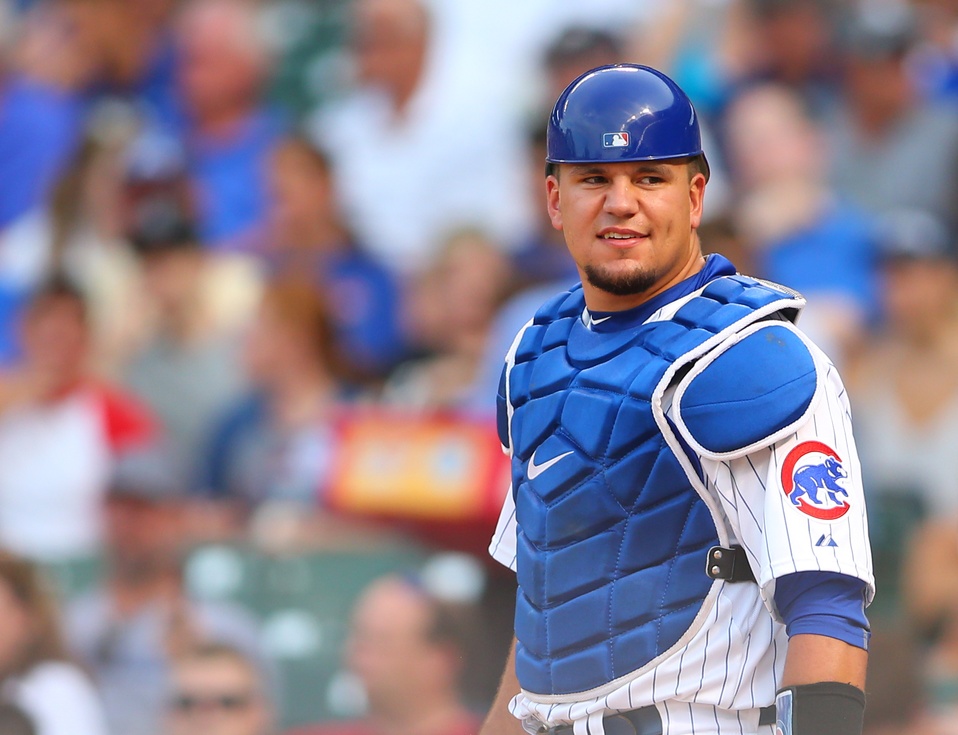My first impressions of Kyle Schwarber were solidified in Beloit, Wisconsin where I traversed flat landscapes and a forgotten Midwest town to gain a glimpse of the Cubs top pick in 2014. His size was striking, especially when contrasted against the immature frames that populate the Midwest League. Schwarber was physically maxed out then with not much room to grow into his hefty body. He’s added some good muscle since, but overall his body has stayed about the same. For Schwarber, it always goes back to the body.
It was clear then that the man-child could hit. He was hardly challenged as he spat on bad spin on the periphery of the strike zone and smashed most anything in the zone. Low-A was a formality for the Indiana University product; he was already advanced beyond this level by the time I laid eyes on him.
The bat isn’t the question with Schwarber. He possesses the kind of natural hitting ability, strength, and approach that allow faint dreams of complete maximization of the hit and power tools to manifest themselves. Defensive value is a subject that we are still trying to tackle as a community. In the very recent past we have just begun to unveil the blood sweat and tears of analysts as they expose CERA and RPM to the world. Our metrics for defense still seem to be in their infancy and further defensive evolutions like shifting only throw the quantitative analyses we do have into further disarray.
It is for those reasons that I believe defense is a misunderstood tool. We have a firm grasp on offense and we can measure production with confidence, so when we project out a player’s ability to produce, we have a solid baseline to draw from. With defense, it is a subjective exercise not unlike critiquing a movie. There are checkboxes to be marked for sure, but on a larger level trying to project out who can and can’t be a good catcher requires a keen eye and imagination.
It was always clear that Schwarber’s defense at catcher was lagging far behind his bat. Schwarber came prepackaged with some ability behind the plate and the type of athletic coordination that allows for sub-two second pop times in spite of an arm that was fringe average on the best of days. He’s quick up the chute and gets into an athletic throwing motion with vigor before uncorking a soft but accurate ball down to second base. A good pop time isn’t all there is to catching however, and the rigors and difficulty of the position are beginning to crystalize in the public eye.
Schwarber is a drive player, a hard worker, and he has his spots where he flirts with competence behind the plate. So while the Cubs obviously understand the importance of a strong defensive backstop, they’re willing to put up with Schwarber’s growing pains at the big-league level because of diligence. Unfortunately, desire and work ethic aren’t all you need to become better on defense. Sometimes, in spite of all the hard work and desire to improve, the defense doesn’t come around. For Schwarber his ability to frame pitches and his general feel for the position are lacking. He stabs at offerings and sometimes he’ll even flat-out miss pitches. For all the quickness he has throwing down to first, his ability to block pitches effectively is surprisingly lacking. Far too often Schwarber will slip into bad habits and will take on the look of an emergency catcher.
The Cubs will try Schwarber out behind the plate for as long as his defense will allow. This is a franchise that is clearly shifting its focus from talent acquisition and maximization to converting assets into wins and, well, winning in the process. With Miguel Montero on the shelf, they clearly believe in finding out just how far Schwarber has to go at the major-league level. When I look at the body and the process, I can’t help but fight the feeling that this will be a short exercise as “full-time” catcher. Schwarber’s body doesn’t profile well behind the plate in the long run, and giving a rookie the kinds of responsibilities a catcher has while expecting him to hit right away is a dangerous way to operate. There’s so much to learn and the game can speed up for players who are behind the learning curve in any facet as a catcher.
I believe Schwarber will hit and produce well over the course of his career, and he’s already done so right away. But I also firmly believe that Schwarber is a once- or twice-a-week catcher at best and that his 50th percentile outcome is still Kyle Schwarber – LF.
Lead photo courtesy of Caylor Arnold-USA TODAY Sports
